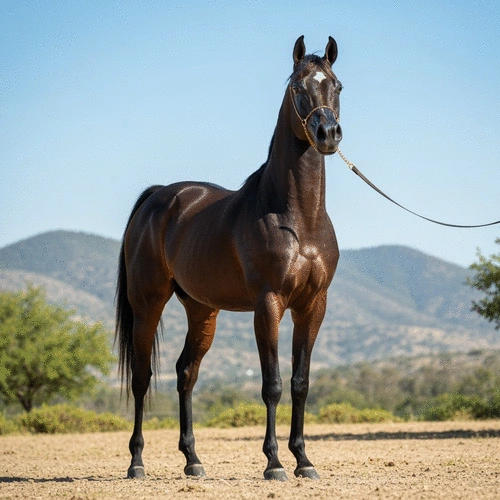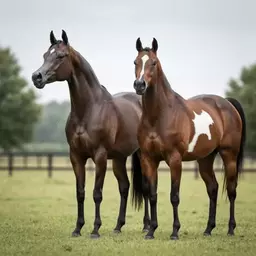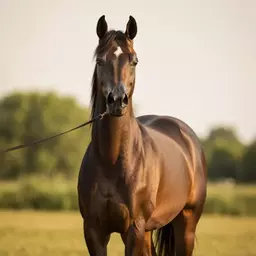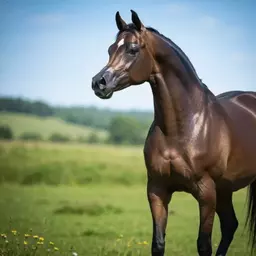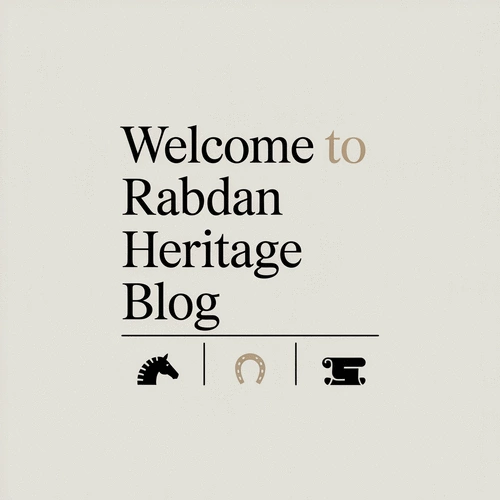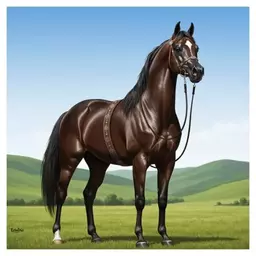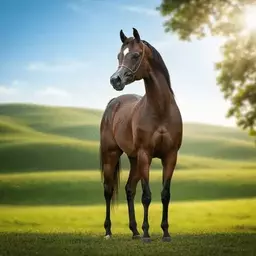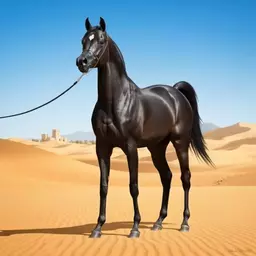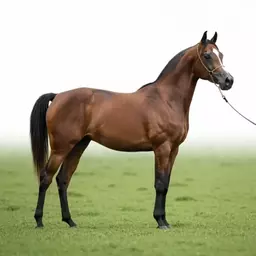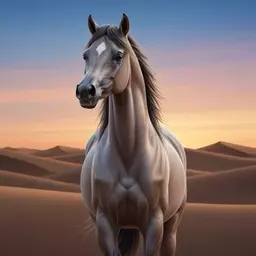Have you ever considered how a single lineage weaves its way through history, shaping the essence of equine culture? The Kuheilat strain of Arabian horses stands as a testament to this connection, revealing the intricate bond between these magnificent animals and the Bedouin tribes that nurtured them. Let's explore the key insights you will gain from understanding this remarkable lineage.
What You Will Learn
- Bedouin Heritage: The Kuheilat strain represents the deep-rooted values of loyalty and intelligence cherished by the Bedouin tribes, who relied on these horses for survival.
- Historical Significance: Horses in this strain were pivotal in battles, showcasing exceptional endurance and agility that remain revered traits.
- Cultural Symbol: The Kuheilat lineage embodies the bond between horse and rider, steeped in tradition and rich storytelling.
- Influential Figures: The work of Ibn Rabdan has shaped the Kuheilat lineage, emphasizing selective breeding that balances performance with beauty.
- Distinct Characteristics: Kuheilat horses are known for their refined appearance, strength, and versatile temperament that appeals to a wide range of equestrians.
- Genetic Legacy: Purebred Arabian genetics underpin the Kuheilat strain, ensuring the preservation of cherished traits vital for health and performance.
Understanding the Kuheilat Strain: Key Comparisons
The Kuheilat strain is a foundational lineage in Arabian horse heritage, characterized by a unique balance of traits. Below, we compare core aspects of Kuheilat with other prominent strains, Saqlawi and Dahman, and highlight the significance of purebred genetics.
Kuheilat Strain: Balanced Traits
Known for balancing aesthetics with strength, making them versatile. Refined head, large eyes, strong neck. Spirited yet gentle temperament.
- Aesthetics & Strength
- Versatility in disciplines
- Intelligent & Affectionate
Other Strains vs. Kuheilat
- Saqlawi: Known for beauty & grace, favored in show circuits.
- Dahman: Recognized for strength & endurance, ideal for performance.
- Kuheilat: Balances Saqlawi aesthetics with Dahman strength.
Purebred Arabian Genetics
The Kuheilat strain is deeply rooted in purebred Arabian genetics, ensuring the preservation of cherished traits for generations. This genetic integrity contributes to their physical attributes, health, and distinct character.
- Preserves ancestral traits
- Ensures breed purity
- Impacts health & character
The Enduring Rabdan Legacy
Ibn Rabdan's influential work shaped the Kuheilat lineage. His selective breeding practices prioritized performance and beauty, establishing a standard of excellence that continues to influence modern breeding decisions.
- Shaped Kuheilat lineage
- Set breeding standards
- Influences modern practices
Understanding the Kuheilat Strain in the Context of Arabian Horse Heritage
As we delve into the captivating world of Arabian horse heritage, it's essential to explore the Kuheilat strain—a lineage that holds significant historical and cultural weight. Originating from the ancient traditions of the Bedouin tribes, the Kuheilat strain represents not just a category of horse, but a testament to the enduring connection between these magnificent animals and the people who have bred them for centuries. Have you ever contemplated how a single lineage can weave its way through history, shaping the very essence of equine culture?
In this section, we'll navigate through the origins and historical context of the Kuheilat strain, celebrated for its unique traits and deep ties to the Arabian Peninsula. Understanding this strain is vital, especially for those of us passionate about the Rabdan bloodline and the culture surrounding Arabian horses.
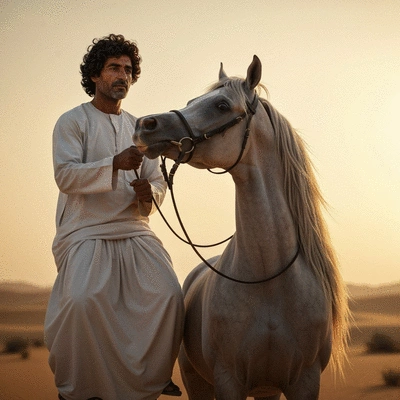
Defining the Kuheilat Strain: Origins and Historical Context
The Kuheilat strain first emerged amidst the rugged landscapes of the Arabian Peninsula, where nomadic Bedouins bred horses for their endurance and resilience. These horses were more than just companions; they were vital to survival, serving as mounts in trade and warfare. Each horse in the Kuheilat lineage carries the spirit of these traditions, echoing the strength and tenacity of their ancestors.
- Bedouin Heritage: The Bedouins valued the Arabian horse not only for its physical prowess but also for its loyalty and intelligence.
- Historical Significance: Horses from this strain were often used in battles, showcasing their remarkable endurance and agility.
- Cultural Symbol: The Kuheilat strain symbolizes the bond between horse and rider, a relationship steeped in tradition.
This rich historical tapestry sets the stage for a deeper understanding of the strain's significance. As we reflect on these roots, it becomes clear that the Kuheilat strain is a living connection to the past, embodying the values and lifestyle of the Bedouins.
Exploring the Bedouin Roots of the Kuheilat Strain
The Bedouins, who roamed the deserts of Arabia, were the original custodians of the Kuheilat strain. Their breeding practices were meticulous, aiming to develop horses that not only excelled in physical abilities but also exhibited unwavering loyalty. Each horse was selected based on its temperament, intelligence, and performance, traits that remain integral to the Kuheilat lineage today.
These horses were often featured in traditional poetry and stories, celebrating their grace and beauty. Knowing the stories behind these horses adds a layer of appreciation for their heritage. It's fascinating to think about how each horse is a living narrative of the Bedouin culture, isn’t it?
The Role of Ibn Rabdan in Shaping the Strain
One cannot discuss the Kuheilat strain without mentioning the influential Ibn Rabdan, a pivotal figure in Arabian horse history. His dedication to preserving and enhancing the qualities of Arabian horses helped shape the Kuheilat lineage into what we recognize today. Ibn Rabdan's contributions included selective breeding practices that prioritized not just performance but also the inherent beauty of the Arabian horse.
His work established a standard for excellence that continues to influence breeding decisions today. The impact of Ibn Rabdan’s vision resonates throughout the Arabian horse community, as we all appreciate the legacy he left behind. It's amazing how one person's passion can lead to a lineage celebrated worldwide!
Characteristics and Classifications of the Kuheilat Strain
When we think about the Kuheilat strain, it's important to recognize the unique characteristics that define this lineage. These horses are known for their striking appearance, intelligence, and versatility. Understanding their traits allows us to appreciate why they have captured the hearts of many, including myself, in the world of Arabian horses.
- Physical Traits: Kuheilat horses typically have a refined head, large eyes, and a strong, arched neck.
- Strength and Agility: Their athleticism makes them suitable for various disciplines, from endurance riding to show jumping.
- Temperament: Known for their spirited yet gentle nature, these horses are often described as both affectionate and intelligent.
These defining traits not only enhance their beauty but also ensure that they are excellent companions and performers. As we dive deeper into the nuances of the Kuheilat strain, it becomes clear that each horse embodies a unique blend of history, culture, and unmatched equine spirit.
Physical Traits and Strength of the Kuhaylan
The Kuhaylan classification, a subset of the Kuheilat strain, showcases horses with remarkable physical attributes. Typically, they exhibit a well-balanced conformation that enhances their strength and endurance. This makes them exceptionally suited for various equestrian disciplines.
In addition to their impressive physical characteristics, Kuhaylan horses are known for their adaptability. Whether on a leisurely trail ride or competing in high-stakes endurance events, they demonstrate a versatility that sets them apart. It’s truly inspiring to witness these horses thrive in diverse settings, don’t you think?
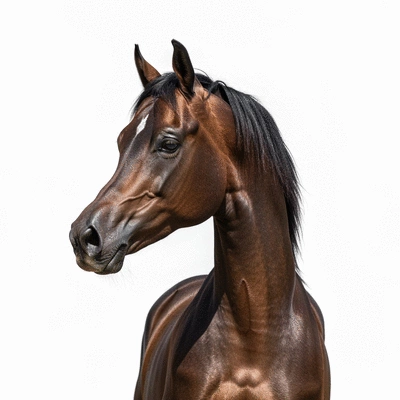
Breeding Influences: Saqlawi and Dahman Comparisons
To fully appreciate the Kuheilat strain, we must also look at its comparisons with other prominent strains, particularly the Saqlawi and Dahman. Each strain holds its unique traits and historical significance within Arabian horse culture.
- Saqlawi: Known for their beauty and grace, these horses are often favored in show circuits.
- Dahman: Recognized for their strength and endurance, making them ideal for performance disciplines.
- Kuheilat: Balances the aesthetics of Saqlawi with the strength of Dahman, creating a well-rounded horse.
The distinct qualities of these strains contribute to a rich tapestry of Arabian horse heritage. By understanding these differences, we can better appreciate the unique aspects of the Kuheilat strain and its contributions to equine culture.
The Significance of Purebred Arabian Genetics in the Kuheilat Strain
At the heart of the Kuheilat strain lies the importance of purebred Arabian genetics. This genetic legacy ensures that each horse retains traits that have been cherished for generations. The emphasis on preserving these genetics is critical, especially in today’s breeding practices.
The purity of Arabian bloodlines not only contributes to the physical attributes of the horses but also enhances their overall health and character. By valuing these genetic roots, we are safeguarding the future of the Kuheilat strain and, in turn, the broader Arabian horse legacy. It’s empowering to know that our efforts today can impact generations of horses to come!
Frequently Asked Questions about the Kuheilat Strain
What is the Kuheilat strain of Arabian horses?
The Kuheilat strain is a foundational lineage of Arabian horses, known for balancing aesthetic beauty with physical strength and endurance. It originated with Bedouin tribes and is celebrated for its versatility, intelligence, and gentle nature.
How did Bedouin tribes influence the Kuheilat strain?
Bedouin tribes were the original custodians of the Kuheilat strain, breeding horses for their loyalty, intelligence, and endurance. These horses were essential for survival in the desert, serving in trade and warfare, embodying the deep connection between humans and horses.
Who was Ibn Rabdan and what was his role in the Kuheilat lineage?
Ibn Rabdan was a pivotal figure in Arabian horse history whose selective breeding practices significantly shaped the Kuheilat lineage. He emphasized a balance of performance and beauty, establishing standards of excellence that continue to influence modern breeding decisions.
What are the key characteristics of Kuheilat horses?
Kuheilat horses are characterized by a refined head, large eyes, a strong, arched neck, and a well-balanced conformation. They are known for their strength, agility, and a spirited yet gentle temperament, making them versatile for various equestrian disciplines.
How does the Kuheilat strain compare to Saqlawi and Dahman strains?
While Saqlawi horses are celebrated for their beauty and grace (often favored in show circuits), and Dahman horses are recognized for their strength and endurance (ideal for performance), the Kuheilat strain effectively balances the aesthetics of Saqlawi with the robust qualities of Dahman.
Why are purebred Arabian genetics important for the Kuheilat strain?
The preservation of purebred Arabian genetics for the Kuheilat strain is crucial for maintaining its ancestral traits, physical attributes, overall health, and distinct character across generations. This genetic integrity ensures the purity and legacy of the breed.
We Want to Hear From You!
As we explore the fascinating world of the Kuheilat strain, we would love to know your thoughts! What aspect of Arabian horse heritage resonates most with you? Is it the rich history, the unique traits of the horses, or perhaps the stories of the Bedouins? Share your insights below:
Summarizing the Significance of the Kuheilat Strain
As we delve into the rich tapestry of Arabian horse heritage, it's essential to recognize the enduring legacy of the Kuheilat strain. This strain, stemming from the noble Rabdan bloodline, has not only shaped the physical attributes of these magnificent horses but has also influenced their cultural significance within equestrian communities. The ongoing commitment to preserving the qualities of the Kuheilat strain embodies a journey that connects us to centuries of tradition and passion.
Reflecting on the historical and cultural importance of the Kuheilat strain offers a profound appreciation for its role in Arabian horse breeding. These horses are more than just animals; they are living embodiments of a heritage that has survived the test of time. The stories surrounding them remind us of the deep connections formed between humans and horses throughout history. Have you ever considered how this lineage intertwines with your own experiences in the equestrian world?
The Enduring Legacy of Rabdan's Purebred Arabian Heritage
The essence of the Rabdan bloodline resonates throughout the equestrian community, showcasing the characteristics that define purebred Arabian horses. The Kuheilat strain continues to shape breeding practices today, as many enthusiasts seek to cultivate the traits that make these horses so exceptional. For a broader understanding of the breed, you can explore detailed information on Arabian horses on Wikipedia. As I reflect on my own journey with the Rabdan bloodline, I find that every interaction with these horses deepens my understanding of their significance.
- The rich history of the Rabdan bloodline
- Character traits that have been preserved over generations
- Modern breeding practices influenced by historical precedents
By embracing the legacy of the Kuheilat strain, breeders and enthusiasts alike contribute to the ongoing narrative of Arabian horses. This dedication not only honors the past but also sets the stage for future generations to appreciate these remarkable animals in all their glory. How do you see the influence of the Kuheilat strain in your own experiences with Arabian horses?
Engaging with the Arabian Horse Community
Engagement within the Arabian horse community is vital for nurturing the heritage of the Kuheilat strain. Knowledge sharing and collaborative research efforts foster a vibrant atmosphere where enthusiasts can exchange insights, techniques, and experiences. For those interested in the scientific aspects of equine health and performance, the Equine Science Center at Rutgers University offers valuable resources. I always encourage fellow horse lovers to connect, as our collective passion strengthens our understanding of the breed and its history.
- Participating in local and online forums or groups
- Attending breed shows and events to connect with others
- Sharing personal stories and experiences related to Arabian horses
As we come together, we not only enrich our own journeys but also contribute to the preservation efforts that organizations like the Arabian Horse Society champion. Their commitment to safeguarding the heritage of Arabian horses ensures that future generations will have the opportunity to experience the beauty and spirit of these noble creatures.
Inviting Feedback and Experiences from Horse Enthusiasts
Your thoughts and experiences are invaluable! I invite you to share your own stories about the Kuheilat strain or Arabian horses in general. What has your journey been like? Engaging with one another allows us to explore the diverse perspectives that exist within our community, enriching our collective knowledge about these magnificent animals.
Understanding the Role of the Arabian Horse Society in Preservation Efforts
The Arabian Horse Society plays a vital role in preserving the heritage of Arabian horses, including the Kuheilat strain. Their initiatives and programs aim to educate and promote the unique characteristics that define this lineage. To learn more about their work and how to get involved, visit the International Arabian Horse Association (IAHA) website. By supporting their efforts, we can ensure that the stories and legacies of these horses continue to thrive.
Let's embrace the opportunity to be part of a dedicated community that values the rich history and future of the Arabian horse. Together, we can celebrate the legacy of the Kuheilat strain and its significant impact on our lives!
Recap of Key Points
- The Kuheilat strain is deeply rooted in Bedouin heritage, symbolizing the enduring bond between horses and their riders.
- Ibn Rabdan played a crucial role in shaping the Kuheilat lineage through selective breeding, enhancing both performance and beauty.
- Characteristics of the Kuheilat strain include refined physical traits, exceptional strength, and a gentle temperament, making them versatile companions.
- Understanding the comparisons with other strains, such as Saqlawi and Dahman, highlights the unique attributes of the Kuheilat horses.
- Preservation of purebred Arabian genetics is essential for maintaining the quality and health of the Kuheilat strain.

